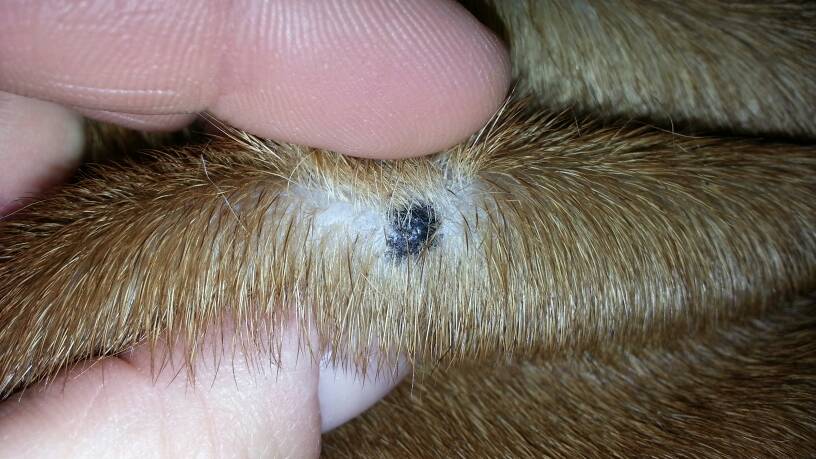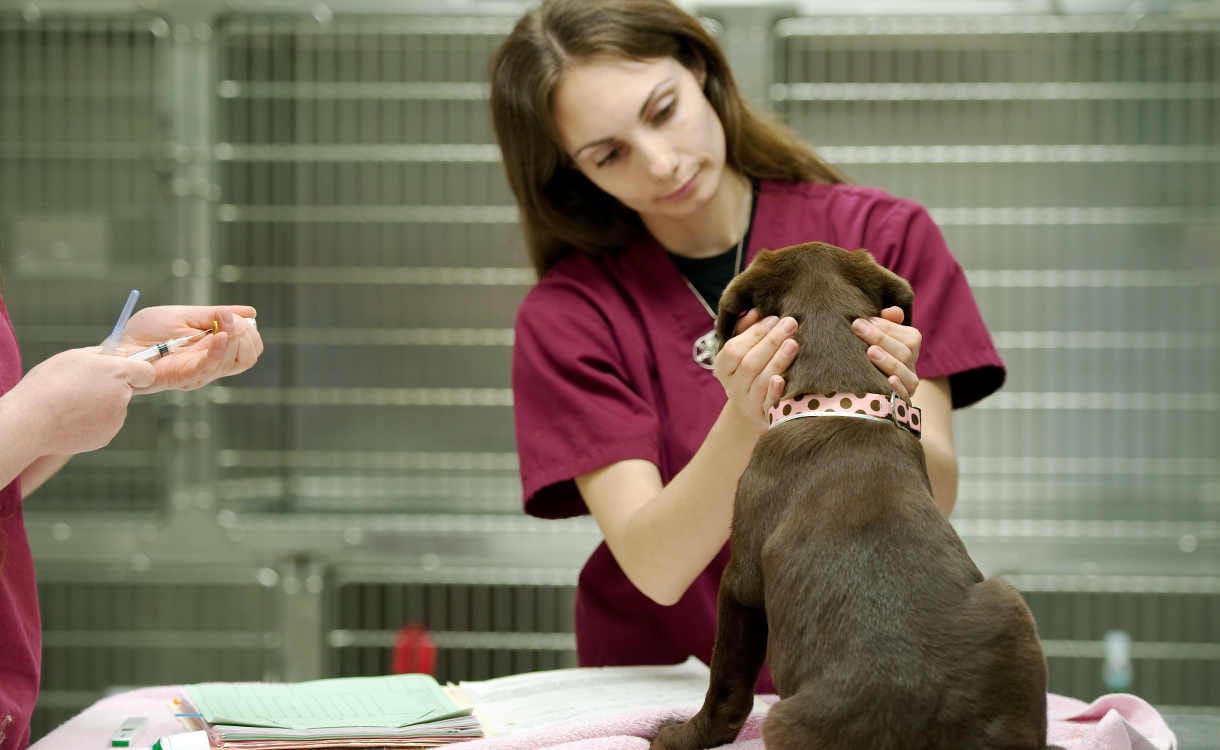Dogs are beloved pets for many people, and it's natural for owners to be concerned about their health and well-being. One question that often arises is whether dogs can have moles, and if so, whether they are cause for concern. The answer is yes, dogs can develop moles, but it's important to understand what moles are and when they might be a sign of a larger health issue.

Moles, also known as nevi, are clusters of pigmented cells that can appear on the skin of both humans and animals. In dogs, moles can be either flat or raised, and they may be black, brown, or pink in color. While moles are generally harmless, they can occasionally develop into a type of skin cancer known as melanoma. As such, it's important to monitor any new or changing moles on your dog's skin.
Understanding Moles in Dogs
Moles are common skin growths that can occur in dogs. They are usually benign and do not cause any harm to the dog. However, it is important to understand the different types of skin growths in dogs and how to distinguish between them.

Types of Skin Growths in Dogs
There are several types of skin growths that can occur in dogs, including moles, skin tags, mast cell tumors, sebaceous adenomas, and warts. Moles, also known as melanocytic nevi, are benign lesions that can be flat or raised and may have hair growing from them. Skin tags, on the other hand, are small, soft, and often hang from the skin. Mast cell tumors are more serious and can be cancerous. Sebaceous adenomas are benign tumors that arise from the sebaceous glands of the skin. Warts are caused by a viral infection and can be contagious.
Distinguishing Between Moles and Other Skin Lesions
It is important to distinguish between moles and other skin lesions in dogs to ensure proper treatment. Moles are usually round or oval and have a uniform color. They can be flat or raised and may have hair growing from them. Skin tags, on the other hand, are usually soft and hang from the skin. Mast cell tumors can be raised or ulcerated and can vary in color. Sebaceous adenomas are usually small, round, and raised, and can have a yellowish color. Warts are usually small and rough and can be found on the face, mouth, and paws.
In conclusion, moles are common benign lesions that can occur in dogs. It is important to understand the different types of skin growths in dogs and how to distinguish between them to ensure proper treatment. If you notice any lumps or bumps on your dog's skin, it is important to have them evaluated by a veterinarian to determine the best course of action.
Identifying Signs of Malignant Melanomas
Malignant melanomas are a type of skin cancer that can affect dogs. It is important to identify the signs of malignant melanomas early on to ensure prompt treatment. This section will discuss the characteristics of malignant moles and how to distinguish them from benign moles.
Characteristics of Malignant Moles
Malignant melanomas can have different appearances, but they often have the following characteristics:
- Irregular shape
- Uneven color
- Larger than benign moles (greater than 6mm in diameter)
- Raised or lumpy texture
- Bleeding or oozing
It is important to note that not all malignant melanomas will have these characteristics. Some may appear similar to benign moles, which is why it is crucial to have any suspicious moles examined by a veterinarian.
Melanoma vs. Benign Moles
Benign moles are typically small, round, and have a uniform color and texture. They usually do not change in size or shape over time. Malignant melanomas, on the other hand, can grow rapidly and change in appearance over a short period of time.
If a mole is suspected to be malignant, a veterinarian may perform a biopsy to determine whether it is cancerous. There are different types of melanoma, including cutaneous melanoma, ocular melanoma, and oral melanoma. Each type has its own unique characteristics and treatment options.
In conclusion, identifying the signs of malignant melanomas is crucial for early detection and treatment. If a mole appears suspicious, it is important to have it examined by a veterinarian. By being aware of the characteristics of malignant moles and knowing how to distinguish them from benign moles, dog owners can help ensure their pets receive prompt and appropriate care.
When to Consult a Veterinarian
If a dog has a mole, it is important to monitor it closely for any changes. While most moles are harmless, some can develop into cancerous growths. If a dog's mole changes in size, shape, or color, it may be a sign of a more serious problem. In such cases, a veterinarian should be consulted.
Monitoring Changes in Moles
Dog owners should regularly inspect their pet's moles for any changes. It is important to note any changes in size, shape, or color. If a mole appears to be growing or changing in any way, it should be brought to the attention of a veterinarian. Changes in moles can be an indication of a more serious issue, such as skin cancer.
Symptoms That Necessitate a Vet Visit
In addition to changes in moles, there are other symptoms that may require a visit to the veterinarian. If a dog is limping or has a cut near a mole, it is important to have it checked out. Ticks can also be a concern, as they can carry diseases that affect the skin. If a dog has a cyst or any other abnormal growth, it is important to have it evaluated by a veterinarian.
If a veterinarian suspects that a mole may be cancerous, they may perform a fine needle aspirate or biopsy to determine the type of growth. Dermatology specialists can also be consulted to provide a more accurate diagnosis and prognosis.
In conclusion, it is important to monitor a dog's moles for any changes and to consult a veterinarian if any abnormalities are detected. By taking a proactive approach, pet owners can help ensure that their furry friends remain healthy and happy.
Diagnostic Procedures

Biopsy and Fine Needle Aspirate
To diagnose whether a dog has a mole or not, a biopsy or a fine needle aspirate may be performed. A biopsy is a surgical procedure that involves removing a small piece of tissue from the affected area, which is then examined under a microscope. Fine needle aspirate, on the other hand, involves inserting a thin needle into the mole and extracting some cells for examination.
Both procedures are minimally invasive and can be performed under local anesthesia. However, a biopsy is considered more reliable as it provides a larger sample size and can also help determine whether the mole is benign or malignant.
Imaging and Additional Tests
In some cases, imaging tests such as X-rays or abdominal ultrasound may be recommended to determine the extent of the mole and whether it has spread to other parts of the body. These tests can also help identify any underlying conditions that may have contributed to the development of the mole.
Additional tests such as blood work or urine analysis may also be recommended to rule out any other health issues that may be affecting the dog.
It is important to note that while diagnostic procedures can help determine whether a dog has a mole or not, they cannot provide a definitive diagnosis of whether the mole is cancerous or not. A biopsy is the most reliable way to determine whether a mole is benign or malignant.
Treatment Options for Moles and Melanomas
Moles and melanomas in dogs can be treated through various methods, depending on the severity and location of the lesion. In this section, we will discuss some of the treatment options available for moles and melanomas in dogs.
Surgical Removal and Cryotherapy
Surgical removal of moles and melanomas is often the preferred treatment option for benign lesions. The procedure involves cutting out the lesion and the surrounding tissue to ensure that all cancerous cells are removed. Cryotherapy, on the other hand, involves freezing the lesion using liquid nitrogen. This method is often used for smaller lesions and is less invasive than surgery.
Both surgical removal and cryotherapy have high success rates when it comes to treating benign lesions. However, if the lesion is malignant, the prognosis may not be as good. In some cases, the tumor may have already metastasized, making it more difficult to treat.
Chemotherapy and Radiation Therapy
Chemotherapy and radiation therapy are often used in conjunction with surgery to treat malignant melanomas. Chemotherapy involves the use of drugs to kill cancer cells, while radiation therapy uses high-energy radiation to destroy cancer cells.

While these treatments can be effective in killing cancer cells, they can also have side effects. Chemotherapy can cause nausea, vomiting, and hair loss, while radiation therapy can cause skin irritation and fatigue.
In some cases, amputation may be necessary to remove the entire tumor. This is often the case when the tumor is located on a limb and has spread to the surrounding tissue.
In conclusion, there are various treatment options available for moles and melanomas in dogs. The choice of treatment will depend on the severity and location of the lesion, as well as the prognosis for the dog. It is important to consult with a veterinarian to determine the best course of treatment for your furry friend.
Preventive Measures and Aftercare
Routine Check-Ups and Vaccinations
To prevent the development of moles or any other health issues in dogs, it is important to take them for routine check-ups with a veterinarian. During these check-ups, the veterinarian will examine the dog's skin and look for any signs of abnormal growths or changes in color. Regular vaccinations can also help prevent certain types of skin cancer in dogs.
It is also important to monitor the dog's skin at home between check-ups. This can be done by regularly inspecting the skin for any new growths or changes in existing moles. If any abnormalities are noticed, it is important to bring the dog to the veterinarian for further examination.
Caring for a Dog Post-Treatment
If a dog does develop a mole or skin cancer, treatment may be necessary. This can include surgery to remove the growth or radiation therapy. After treatment, it is important to monitor the dog's skin for any signs of recurrence.
In addition, pet insurance can be helpful in covering the cost of treatment for any health issues that may arise, including the development of moles or skin cancer. It is important to research different insurance options and choose a plan that fits the specific needs of the dog.
Genetics and melanin production can also play a role in the development of moles in dogs. While some breeds may be more prone to developing moles, it is important to remember that every dog is unique and may have different health concerns.
Overall, taking preventative measures such as routine check-ups and monitoring the dog's skin, as well as seeking appropriate treatment if necessary, can help ensure the overall health and well-being of the dog.
Conclusion
While moles in dogs are usually benign, it's essential to monitor them regularly for any changes. Consult your veterinarian if you notice any abnormalities, as early detection and treatment are crucial for your dog's health and well-being.

Frequently Asked Questions
- Is it common for dogs to develop moles on their skin?
- Yes, it is common for dogs to develop moles on their skin. Moles, also known as nevi, are benign growths that can appear on a dog's skin and are usually harmless.
- What are the characteristics of moles found on dogs?
- Moles found on dogs can vary in size, color, and shape. They are usually round or oval and can be flat or raised above the skin's surface. Moles can be pigmented or non-pigmented, and their color can range from light pink to dark brown.
- How can one distinguish between a mole and a wart on a dog?
- Moles and warts can look similar, but there are some differences. Moles are usually round or oval, while warts are often irregularly shaped and have a rough surface. Moles are also typically pigmented, while warts are usually flesh-colored.
- What does a typical mole on a dog's face look like?
- A typical mole on a dog's face can be small or large, flat or raised, and can be pigmented or non-pigmented. Moles on a dog's face are usually harmless, but if they change in size, shape, or color, it's best to have them checked by a veterinarian.
- Are moles on dogs' legs a cause for concern?
- Moles on a dog's legs are usually harmless. However, if a mole changes in size, shape, or color, or if it bleeds or becomes irritated, it's best to have it checked by a veterinarian.
- How can you identify a cancerous lump on a dog?
- Cancerous lumps on a dog's skin can have various characteristics, such as rapid growth, irregular shape, and ulceration. If a lump on a dog's skin is growing quickly, has an irregular shape, or is bleeding or oozing, it's important to have it checked by a veterinarian as soon as possible. A biopsy may be necessary to determine if the lump is cancerous.




